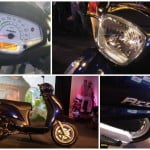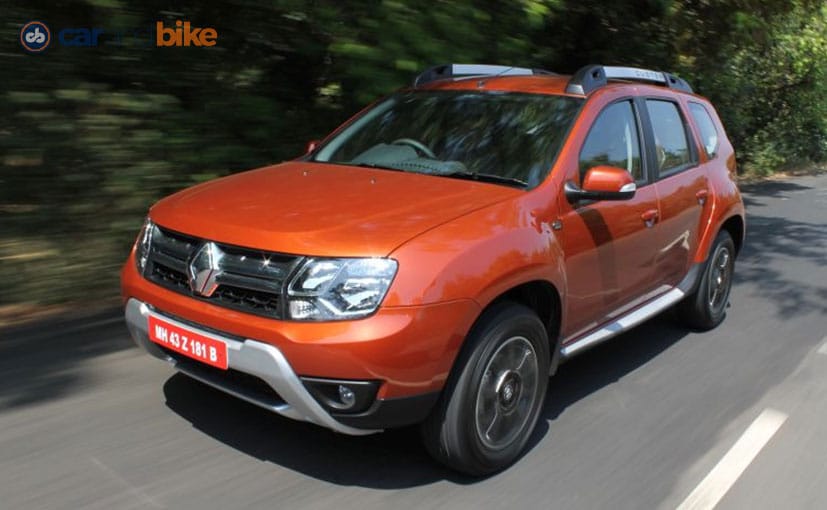
The Renault Duster has been a massive success for the French carmaker in India, and it has also been the NDTV Car of the Year 2013. After ruling the roost for several quarters, it was only in 2015 that the Hyundai Creta broke its stronghold. The Duster has already sold nearly 150,000 units in the country, and now is back to reclaim its crown with a facelift, and a new variant. This ‘new’ Duster was first shown at the 2016 Auto Expo in February 2016, when it was unveiled. The market launch has just taken place last week, and as expected introduces the much awaited AMT variant to the market too.
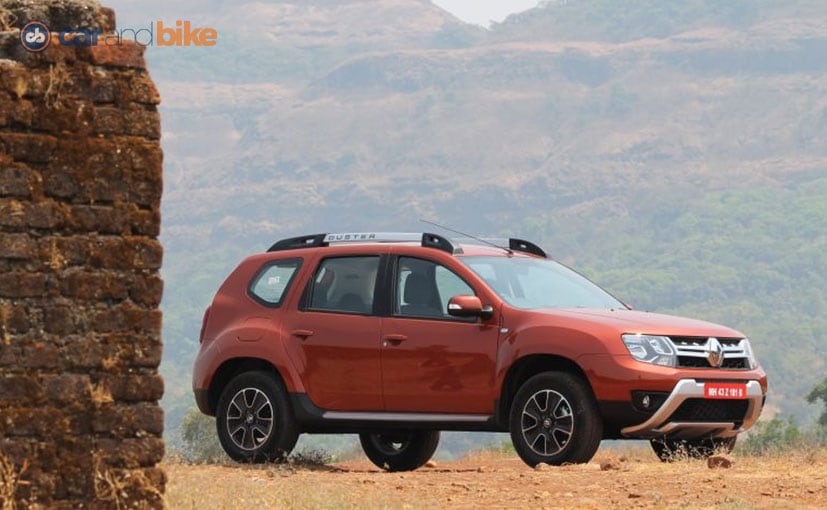
Renault Duster AMT Front
There are no other mechanical changes, and the Duster retains its quirky and unique profile. The car receives a cosmetic makeover inside and out – with the new front grille (heavy on the chrome), and very edgy headlamp being the most significant changes. The taillights are also new, with a completely new signature element that lights up like an S or lightning strike at night – Renault is calling it the waterfall design! I feel the work on the face is rather nice, and in most part also reflects the global facelift that the Duster received last year.
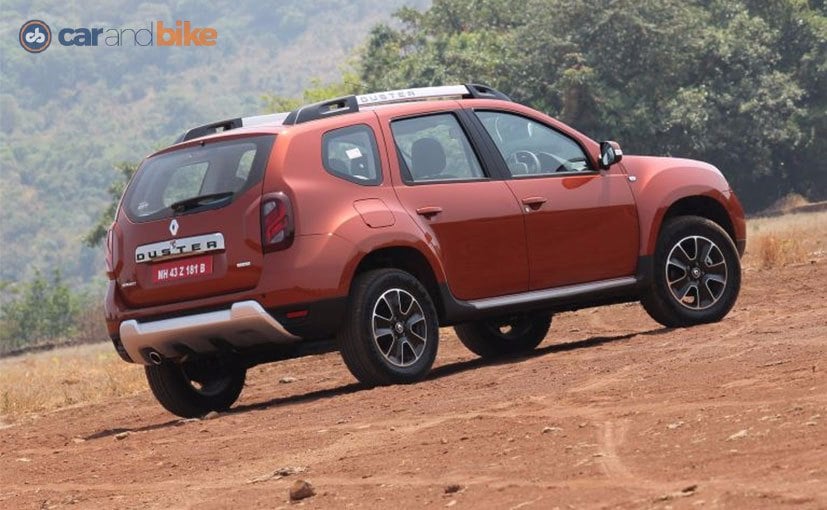
Renault Duster AMT Rear Quarter
The taillight is a bit overdone and looks a little gimmicky – though at night the new light pattern does stand out. The new alloy pattern is finished in a dark gunmetal grey – and I am told it has come from customer feedback suggesting such a look for the Duster. It is distinctly new and different looking, but it doesn’t appeal to me. The new roof rails are now lighter in tone, fatter than before and carry the Duster badging on them.
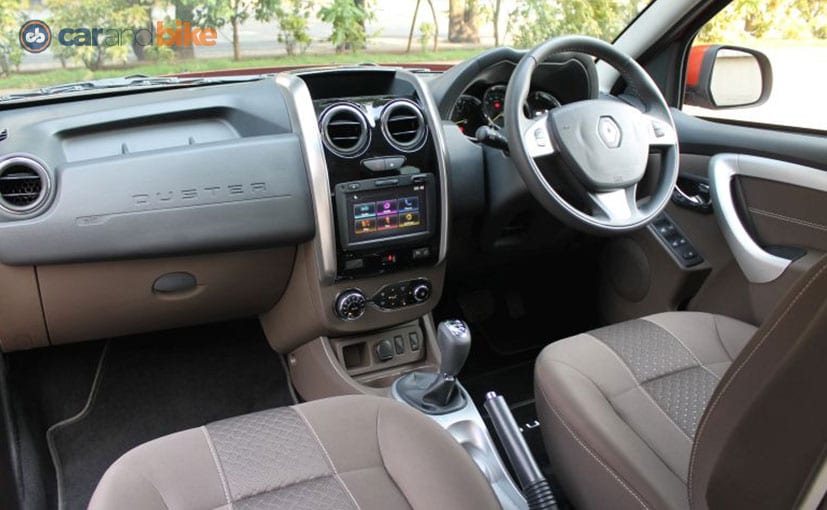
Renault Duster AMT Dashboard
On the inside the car gets a new palette. Dark brown plastics instead of the former beige – now form the two-tone with black. I don’t care much for the colour and I have to say it looks dull and uninspiring. The new fabric brown seats look and feel good though. The central console is now finished in piano black, and the AC controls have been restyled rather smartly with new touch buttons and dials with a more solid premium feel. The top end retains its touch screen with the navigation and reverse camera – which is good. Cabin space and seat comfort are exactly as before – and so remain an asset to this model.

Renault Duster AMT Centre Console
It is below the central console that you find the really new element. Last year that would have been the dial to engage the AWD. While that variant still exists, the point I am making now is about the AMT of course! The automated manual transmission, or Easy-R as Renault is badging it is essentially a system fitted with computer-controlled electromechanical actuators. These basically do the gear changing for you, and so it sits over the regular 6-Speed manual gearbox and controls its operation. Put it in D or drive and the AMT system shifts gears according to road/traffic conditions and throttle input. But you can also put into M or manual to be able to manipulate and govern the gear changes, as you would in a normal manual.

Renault Duster AMT Performance
So how does it drive? The simple answer? Very well! I must state here that no AMT – no matter how good – will ever offer the precision of neither a modern automatic gearbox, nor the fun or sportiness of its manual counterpart. But then within the AMT brigade some are better than others. It is evident that Renault has gone back to the drawing board a few times to ensure what we get is a well-engineered product that is also reasonably smooth and responsive. The ZF-sourced AMT system has been tweaked to provide the maximum smoothness and at times, it gives you the impression of driving a CVT – primarily in city traffic.
By this, I don’t mean it is sluggish, instead it takes some getting used to, and then performs admirably. There is no doubt that gear changes are indeed perceptible, but the little lag taken to engage the gear is not disturbing. Where the system does suffer is at times when it downshifts – where there is an inexorable delay. This is especially true when trying to drop from 4th-3rd or 3rd-2nd gears. But otherwise, the car sounds eager and really plays the convenience tag well.
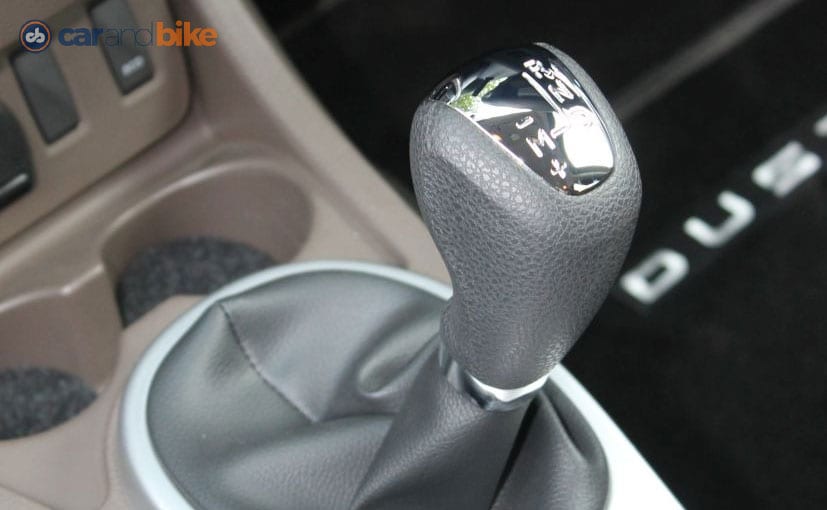
Renault Duster AMT Gear Knob
The AMT system has hill-start, a creeping function to maintain traction, and electronic stability programme which helps make the drive stress free. Renault wanted to go automatic on the Duster for quite some time, but finally settled on the AMT as there were no plans for either a petrol CVT (though Nissan toyed with the idea for the Terrano), nor a conventional auto box for global markets. The AMT idea took many months of work, and I am happy to know that a lot of the engineering involved the team from Renault India working in conjunction with Renault engineers at the company’s R&D base in Spain. The same is true of the redesign, which involved the Renault Design Centre in India as much as it did their counterparts in France.
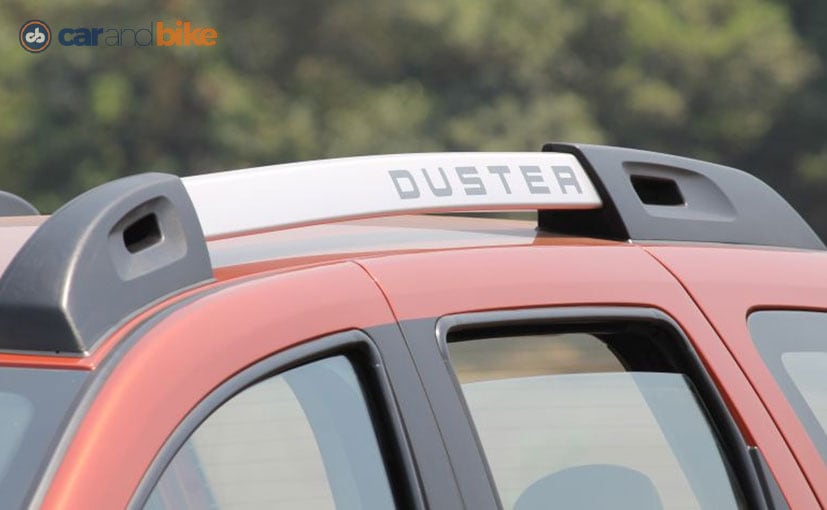
Renault Duster AMT Roof Rail
Renault retains all earlier drivetrain options – including a petrol for good measure – though its not available in higher equipment trims. The capable AWD system stays on the more powerful 108 bhp diesel engine. The car performs well off road too, and like before, the 210 mm ground clearance helps that cause. The 6-Speed manual/AMT are also offered with only that engine. The 83 bhp diesel and 102 bhp petrol has the 5-Speed manual transmission of course.
Renault says it now sports a new ‘CMO 10’ electronics architecture, which includes updates on certain electrical and chassis components. I found no major change in the performance – which was always great anyway. The car retains its drive dynamics, handling very well, and offering great ride quality too. On the AWD Duster though the new CMO 10 architecture plays a key role in enhancing how the system responds to different terrains. This, in turn enhances the off-roading capability.
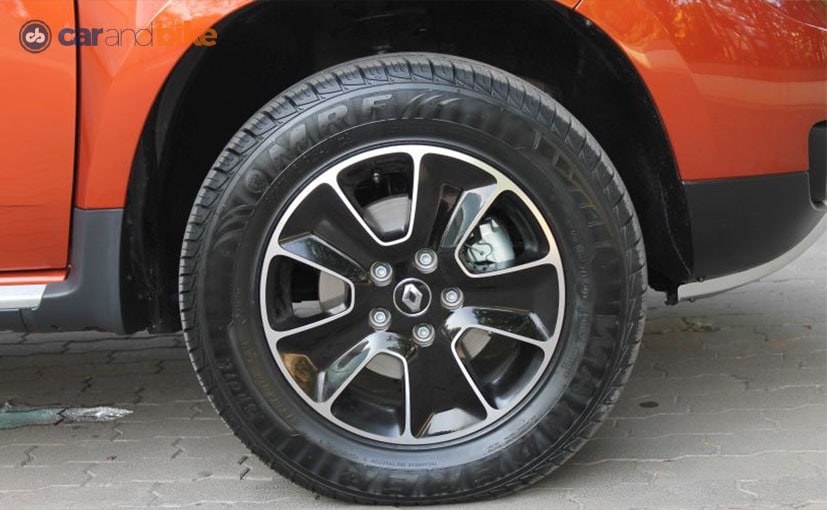
Renault Duster AMT Alloy Wheel
Renault has now introduced a Standard variant below the previous entry RxE variant. This may offer Renault a lower entry price at 8.46 lakh – but really does little else as its woefully meagre on equipment and features. It doesn’t even have those ‘waterfall’ look LED taillights! The mid to high variants have the Eco Mode that regulates throttle response and helps increase mileage by 10%. The car offers claimed mileage figures of 13.06 kmpl for the petrol, 19.87 kmpl for the 83 bhp diesel and 19.6 kmpl for the 108 bhp diesel – manual and AMT. The 108 bhp diesel AWD offers 19.72 kmpl fuel efficiency.
And that then brings me to my chief grouse. Renault’s European lineage notwithstanding, the Duster remains bereft of standard safety equipment. Airbags are missing from the Standard and RxE, while ABS (antilock brakes) and EBD (electronic brake force distribution) also start only from the RxE trim. There is a driver airbag only on the RxL and RxS trims with just the top-end RxZ offering dual airbags as standard. That is simply not okay. I get that the Indian consumer may not care as much as I do, and that Renault needs to stay competitive – but take a leaf out of Mahindra’s playbook and offer dual airbags and ABS as at least optional on ALL variants – as it does on the Scorpio, and even the smaller cars like the TUV300 and KUV100.
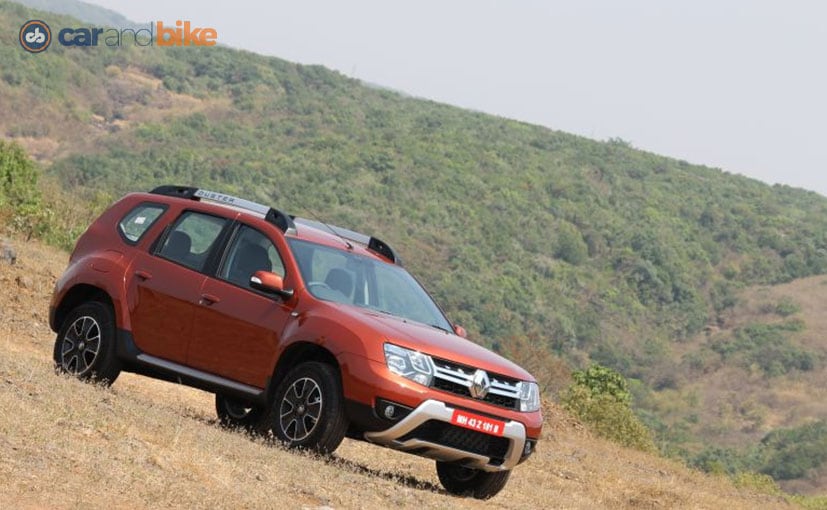
Renault Duster AMT Styling
That said the car’s build quality and ride height will certainly still work in favour of the safety argument. The monocoque shell ensures good integrity and control too. The Duster remains relevant, capable and very apt for India. The facelift and more crucially – that AMT – will make it more so. The recent launches in the subcompact space – the TUV300, Vitara Brezza and recently repositioned EcoSport will help create a clearer distinction between the subcompact and compact SUVs. This will help the Duster consolidate its position against the Scorpio and the Creta too, with greater focus. While I suspect the Creta will remain the leader here, it will be hurt somewhat by the Vitara Brezza. The Duster is now not trying to be a softroader at all. Its butch looks, AWD option and AMT convenience will help it create its own identity once more in the Indian market
[“source-auto.ndtv”]




